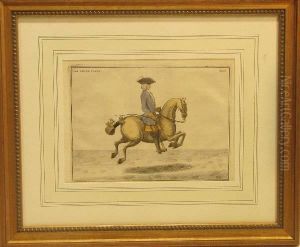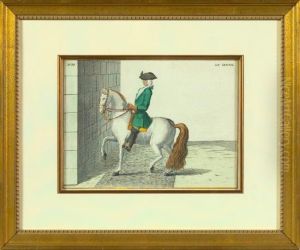Baron D' Eisenberg Paintings
Baron Friedrich August von der Trenck, often mistaken for Baron d'Eisenberg due to their contemporaneous periods and both having titles, was a notable figure in European history, particularly in the realms of military and literature. However, focusing on the person of interest, Baron d'Eisenberg, whose full name was Jacob Christoph Le Blon, was an artist and engraver born in Frankfurt am Main in 1667, and he became known for his pioneering work in color printing. It's important to clarify that while both individuals led fascinating lives filled with achievements and contributions to their respective fields, their identities and areas of expertise were distinct.
Baron d'Eisenberg, whose contributions are more aligned with the arts, particularly in the domain of engraving and equine studies, was less about military exploits and more focused on the advancement of printing techniques and the study of horses. He spent a significant part of his career in Portugal and England, where he was involved in the production of detailed equestrian prints and writings. His notable work, 'L’Art de Monter à Cheval', which translates to 'The Art of Horse Riding', was published in the 18th century and illustrates his profound understanding and passion for horses. These works not only showcased his artistic skills but also contributed significantly to the equestrian arts, providing valuable insights into the practices and techniques of the time.
Throughout his life, d'Eisenberg was recognized for his artistic talents and his contributions to the arts. His works are characterized by their detailed precision and the use of color, which was innovative at the time. Despite the lack of widespread fame in comparison to other artists of the era, d'Eisenberg's contributions to the field of printing and equestrian arts have secured him a place in history. He passed away in 1745, leaving behind a legacy that would influence future generations in the realms of both art and equestrianism. His life and works remain subjects of interest for art historians and equine enthusiasts alike, highlighting the diverse ways in which one can impact the world through passion and innovation.

